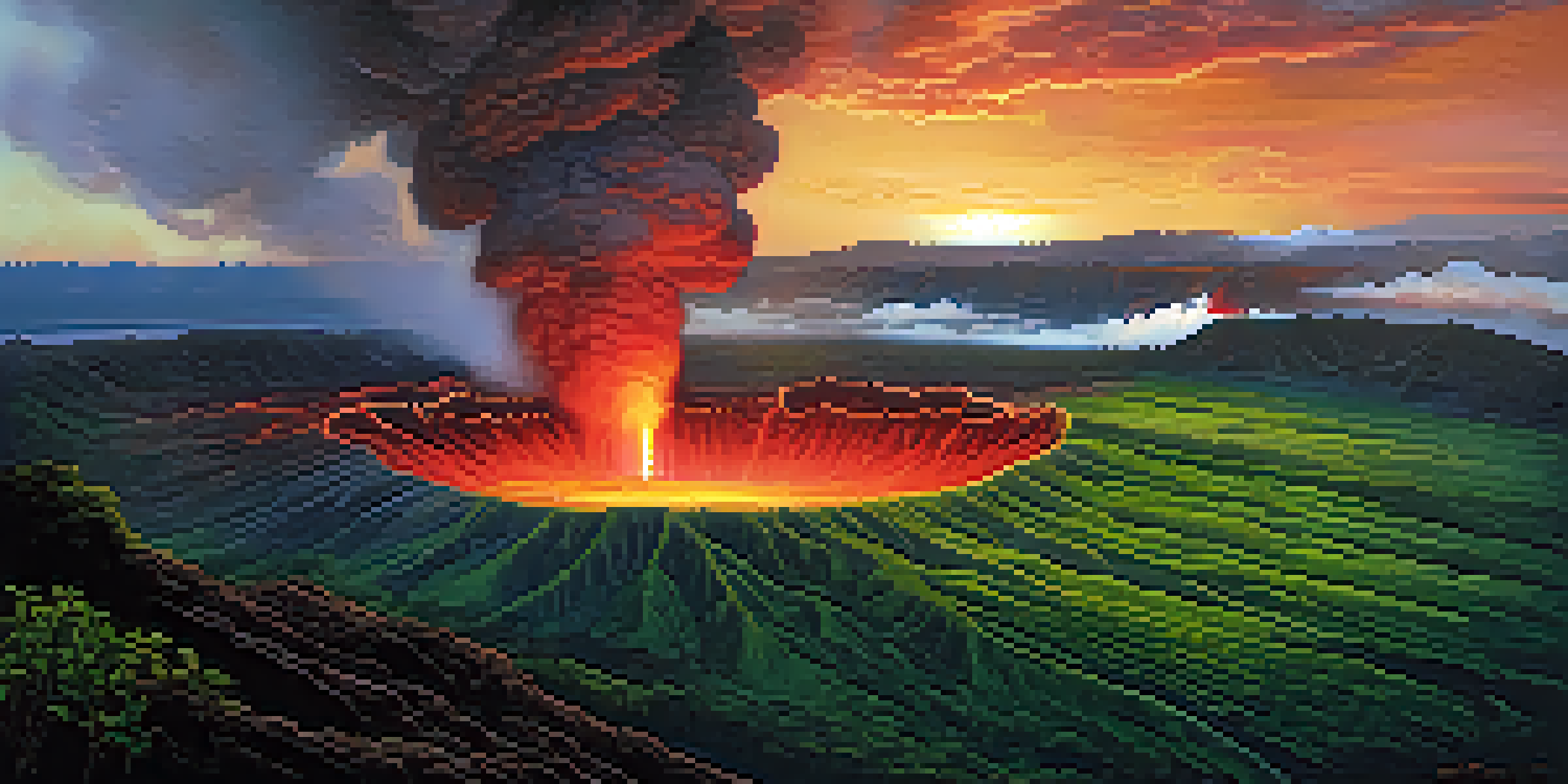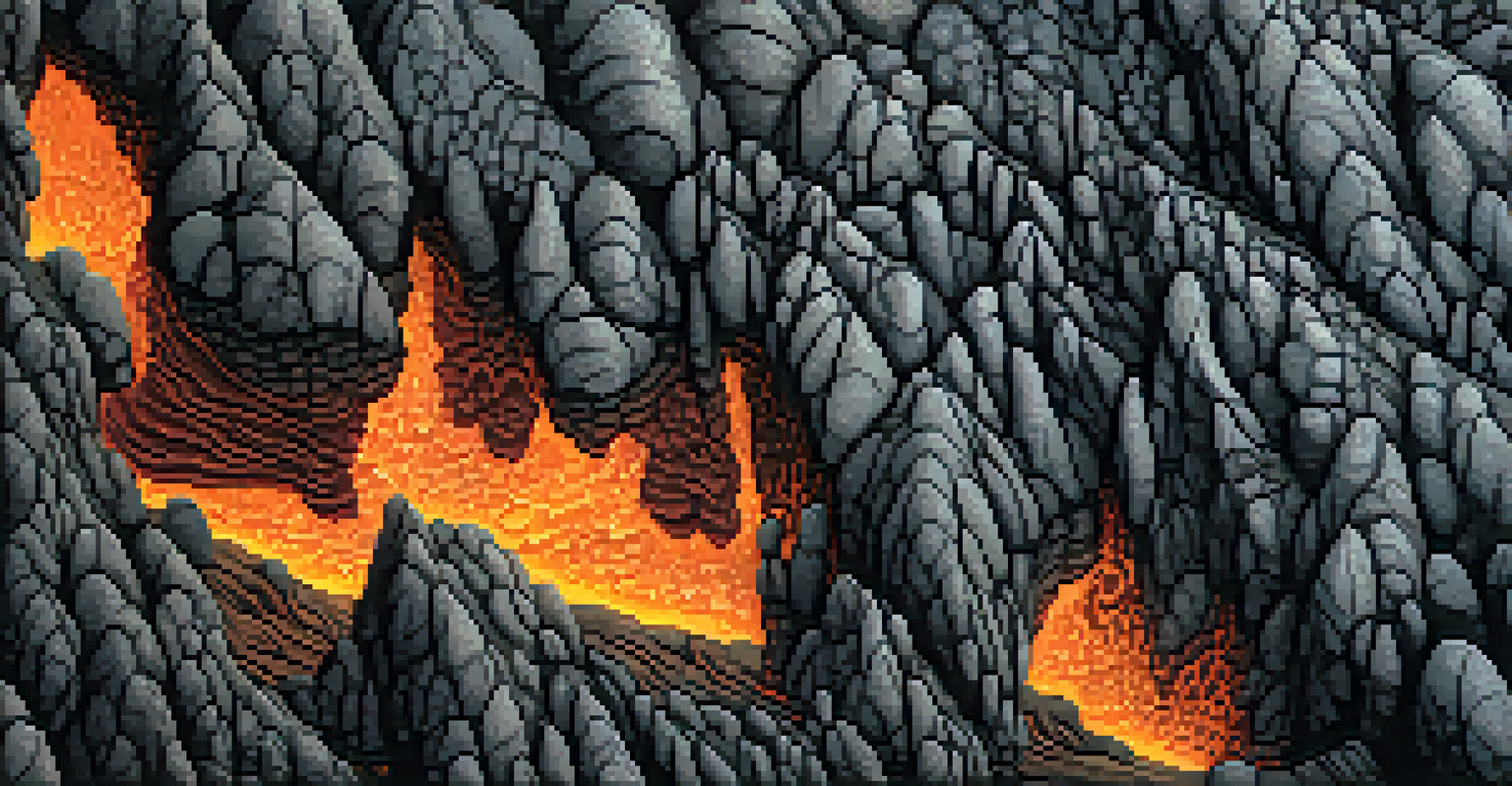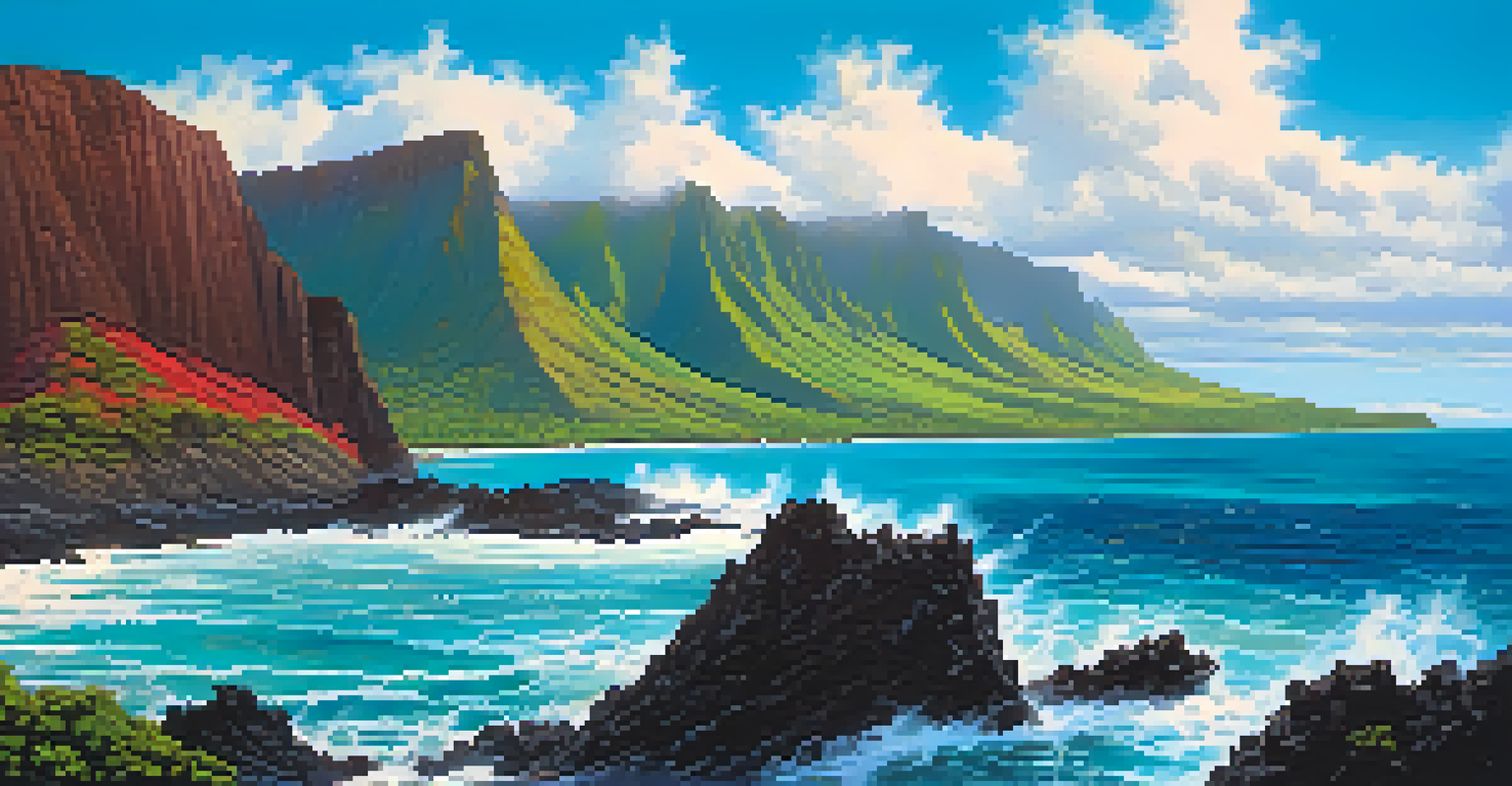Volcanic Eruptions: Hawaii's Unique Natural Disasters

Hawaii's Volcanic Landscape: A Geological Marvel
Hawaii is home to some of the most active volcanoes in the world, including Kilauea and Mauna Loa. These volcanic giants shape the islands' stunning landscapes, creating everything from lush valleys to dramatic cliffs. The unique geological formations tell a story of Earth's fiery past and the ongoing processes that continue to mold the islands.
The earth has music for those who listen.
The Hawaiian Islands were formed by volcanic activity over millions of years, starting from the ocean floor. As the Pacific tectonic plate moves over a hotspot, magma rises through the crust, creating islands. This geological activity not only contributes to the islands' beauty but also plays a crucial role in their ecosystem.
Understanding the geological forces at play helps us appreciate the dynamic nature of Hawaii. The eruptions, while potentially devastating, are also a reminder of nature's power and resilience. Each eruption reshapes the land, creating new habitats and altering existing ones.
What Causes Volcanic Eruptions in Hawaii?
Volcanic eruptions in Hawaii primarily occur due to the movement of tectonic plates and the presence of a hotspot beneath the islands. As the Pacific Plate shifts, it allows magma to rise and escape through fissures in the crust, leading to eruptions. This process is relatively unique compared to other volcanic regions, where eruptions are often driven by subduction zones.

The hotspot beneath Hawaii is stationary, which means that as the tectonic plate moves, new volcanoes can form over time while others become dormant. This explains the chain of islands stretching from the Big Island of Hawaii to Kauai. Understanding this process helps us predict potential eruptions and assess the risks involved.
Volcanoes Shape Hawaii's Landscape
Hawaii's active volcanoes like Kilauea and Mauna Loa create stunning landscapes and influence the island's unique ecosystem.
Additionally, factors such as gas buildup in magma can influence the type and intensity of an eruption. When pressure builds and exceeds the strength of the rock above, it can lead to explosive eruptions. Conversely, the gentle lava flows of Kilauea demonstrate how eruptions can also be relatively calm, creating new land rather than destruction.
The Beauty of Lava Flows: Nature's Artistry
One of the most captivating aspects of Hawaiian volcanic eruptions is the stunning lava flows they produce. When molten lava escapes from the volcano, it can create rivers of glowing orange and red that flow down mountainsides, eventually cooling into unique rock formations. This process has been responsible for creating the breathtaking landscapes that draw millions of visitors each year.
Nature always wears the colors of the spirit.
Lava flows can vary in appearance and behavior, with some moving slowly and others rushing forth with incredible speed. This variability adds an element of unpredictability to the experience of witnessing an eruption. Many locals and tourists alike find beauty in the chaos, as the land transforms before their eyes.
The formation of new land through lava flows also contributes to the island's ever-changing ecosystem. As the cooled lava breaks down over time, it provides nutrients for new plant life to grow, showcasing nature's ability to reclaim and rejuvenate. This cycle of destruction and rebirth is a fundamental part of Hawaii’s identity.
The Impact of Eruptions on Local Communities
While Hawaii's volcanic eruptions can be awe-inspiring, they also pose significant challenges for local communities. Eruptions can disrupt daily life, destroy homes, and impact air quality due to volcanic ash and gases. Residents must often prepare for evacuations and navigate the uncertainties that come with living near active volcanoes.
Community resilience is key in the face of these natural disasters. Local organizations and government agencies work tirelessly to ensure that residents are informed and prepared for potential eruptions. Emergency plans, educational resources, and support networks are crucial for helping people cope with the impact of volcanic activity.
Cultural Ties to Volcanic Activity
Hawaiian volcanoes hold deep cultural significance, with legends and traditions that reflect the people's respect for nature and its power.
Moreover, the beauty of Hawaii often serves as a reminder of the risks involved. Many residents have a deep connection to the land, viewing the volcanoes as both a threat and a source of life. This duality fosters a unique relationship between the people and their environment, highlighting the importance of understanding and respecting nature.
Volcanic Activity Monitoring: Keeping a Close Eye
To mitigate the risks associated with volcanic eruptions, scientists closely monitor Hawaii's volcanoes using a variety of tools and techniques. Seismographs track earthquakes, which can indicate magma movement beneath the surface. Satellites and ground-based sensors provide real-time data on gas emissions, ground deformation, and thermal activity.
The Hawaiian Volcano Observatory (HVO) plays a crucial role in this monitoring effort. They combine geological research with public education to ensure that residents and visitors are aware of potential hazards. Regular updates and forecasts help communities prepare for any volcanic activity that may arise.
This proactive approach not only aids in disaster preparedness but also allows scientists to study the fascinating processes of volcanism. By monitoring eruptions, researchers gain valuable insights into how volcanoes behave and how they impact the surrounding environment. This knowledge is essential for improving safety measures and understanding the Earth's natural systems.
The Cultural Significance of Volcanoes in Hawaii
Hawaii's volcanoes hold a deep cultural significance for its native people. Many Hawaiian legends and traditions are intertwined with the land and its volcanic activity. For instance, the goddess Pele is revered as the deity of fire and volcanoes, embodying the power and unpredictability of eruptions.
These cultural narratives not only reflect the respect for nature but also highlight the deep connection between the people and their environment. Ceremonies and rituals often honor the volcanoes, showcasing the importance of balance and harmony with the land. This cultural lens provides a richer understanding of how volcanic activity is perceived and experienced.
Volcanic Tourism: A Double-Edged Sword
While volcanic eruptions attract tourists and boost the economy, they also pose challenges related to environmental impact and safety.
In addition to spiritual connections, volcanoes also play a role in Hawaiian identity and heritage. The stories and traditions passed down through generations emphasize the significance of the islands' natural features. This cultural context adds depth to the experience of witnessing a volcanic eruption, reminding us that these events are not just geological phenomena, but also powerful symbols of life and continuity.
Tourism and Volcanic Eruptions: A Double-Edged Sword
Hawaii's volcanic eruptions have become a major draw for tourism, attracting visitors eager to witness nature's spectacle. Many travel to the islands to view eruptions up close, explore lava fields, and learn about the geological history of the area. This influx of tourists can provide significant economic benefits to local communities.
However, the popularity of volcanic tourism can also pose challenges. Increased foot traffic near active sites can lead to environmental degradation and safety concerns. Balancing the desire for exploration with the need to protect these delicate ecosystems is crucial for sustainable tourism.

Furthermore, the impact of eruptions on local infrastructure can affect the tourism experience. Eruptions may lead to road closures or restricted access to certain areas, creating a need for ongoing communication between authorities and visitors. By fostering a responsible approach to volcanic tourism, Hawaii can ensure that both residents and travelers can appreciate the beauty and power of its unique natural disasters.